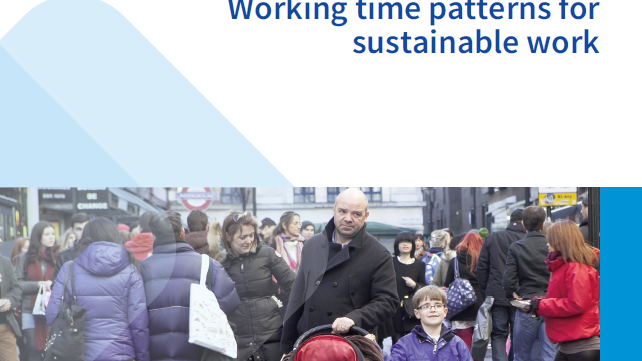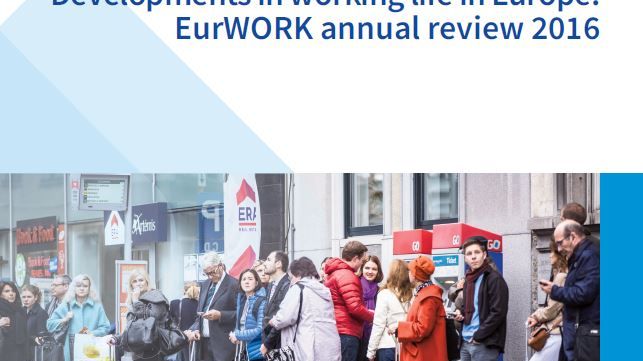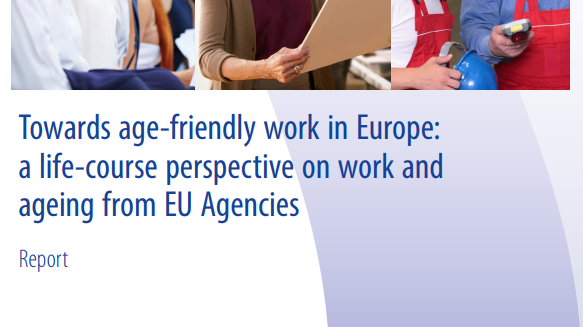
Blog post -
Rethinking working time in Europe
Working time is more than just clocking in and clocking out. In this blog piece, originally published in Social Europe, Jorge Cabrita looks at three reasons why working time in Europe should follow a life course perspective.
The results of recent research on working time patterns in the EU constitute a strong plea for working time policies that clearly acknowledge the life course perspective. This means that working time must not only be thought and organised in daily, weekly, monthly and/or yearly terms but also take into full consideration the different stages of our lives. Here are three important reasons why:
1: To support workers when they need It the most
EWCS data show that the differences between preferred and actual working time are the largest during the parenting phase and towards the end of working life. At the same time, the lack of work–life balance during these two periods is most pronounced. This clearly means that the needs of workers vary over their life course and that the tools available to them to achieve a good balance between paid work and personal and family responsibilities may well be inadequate. Parents with pre-school children, for example, are more likely to report a poor work–life balance, not having enough time for their family and family responsibilities interacting negatively with their job.
In the EU28, women continue to spend more time in work activities than men: in 2015, on average, women spent 58 hours in paid work (main and second job, where applicable), commuting and unpaid work (including domestic work, care for children or elderly members of the household, etc.), against only 52.5 hours declared by men. At the same time, the difference between actual and preferred working hours is larger for men, in particular if they are in the parenting phase of their lives (see table).
Actual and preferred weekly working time (hours per week), EU28, 2015
| Men | Women | |||
| Actual | Preferred | Actual | Preferred | |
| Cohabiting couples with children under 7 years old | 39.8 | 37.7 | 31.7 | 30.9 |
| Cohabiting couples with children 7 to 12 years old | 41.3 | 38.1 | 31.3 | 30.7 |
| Cohabiting couples with children 13 to 18 years old | 40.4 | 37.9 | 32.3 | 31.8 |
Source: EWCS 2015
Working time policies that acknowledge these variations over a life course provide more support and flexibility for those periods where tensions in work-life balance are acutest.
2: To contribute to cutting the large disparities between Member States
Working time patterns differ considerably across the EU. Workers from the UK and Ireland, as well as Continental and Southern clusters, have a poorer work-life balance. Conversely, workers from Northern countries are less likely to report that their family commitments negatively affect their job. And this is not by chance. In these countries, the time-off/holiday leave systems are flexible and relatively generous while reversible time options across the life course are more common, giving workers the possibility to better adapt their working time to various personal, family and social commitments.
Working time policies that acknowledge the differences in extent, scope and take-up of universal and individualised rights in the EU Member States and that promote them where they are scarcer or more limited would reduce these across the board. Universal and individualised rights such as maximum weekly hours, minimum rest periods, leave, family related leave, protection in shift and night work, for example, should be complemented by collective agreements – at national, sectoral, branch or company level. These agreements can take account of the specificities of the sector or company while adapting working time duration and organisation according to individuals’ changing needs and preferences across the various life stages.
3: Working hours and working time arrangements are key for sustainable work
Good health, satisfaction with working conditions and flexible work–life balance arrangements are strong predictors of a decent and long working life. More important, perhaps, the EWCS data show that having greater job autonomy and ability to determine one’s working hours and work content are important factors influencing individuals’ willingness to stay longer in the workforce.
Working time policies that a) foster patterns of work that prevent negative impacts on workers’ health and well-being (for example, by prohibiting long working hours for extensive periods of time), and, b) promote greater job and working time autonomy and better work–life balance will contribute to make work more sustainable.
It’s much more than “flexible working time”
Those are three strong arguments for designing and implementing working time policies that take into consideration that the tensions between time for paid work and for personal, family and social commitments vary across the life course. For this to happen, it is crucial that all relevant actors and institutions – including employers and workers’ representatives, and civil society at large – are actively involved and consulted.
However, very well designed and comprehensive working time policies by themselves are not enough. The required supporting infrastructure – transport systems and child/elderly care services, for example – must be in place and accessible and affordable for all. Only then can working time policies have the desired outcomes for workers, organisations and society in general. Rethinking how we organise our working time requires much more than just implementing “flexible working time”.
Download/order the report: Working time patterns for sustainable work






